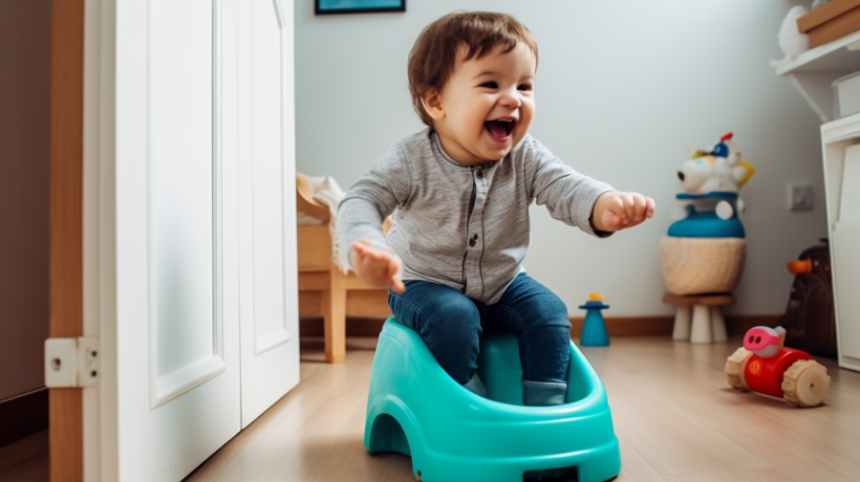Welcome to our comprehensive guide on when to begin potty training your child. Potty training is a significant milestone in every child’s life, and it is essential that parents know when the perfect age to start is. While there may be no one-size-fits-all answer, there are some general guidelines you can follow to help determine if your child is ready for toilet training.
What is Potty Training?
Potty training, also known as toilet training or toilet readiness, refers to the process of teaching young children how to use the toilet independently. It involves helping them learn how to recognize the urge to urinate or defecate, and then guiding them towards using the bathroom instead of relying on diapers or pull-ups.
It is a significant milestone in a child’s development that allows them to gain bathroom independence and helps parents save money on diapers. However, it can be a challenging process for both parents and children. Therefore, knowing when the perfect age to start potty training is crucial.
When Should You Start Potty Training?
The primary keyword for this topic is “potty training,” and one of the most common questions parents ask is when they should start potty training their child. The answer may vary depending on several factors such as your child’s physical readiness, behavior, and personality.
According to pediatricians and child development experts, it is not recommended to start potty training until the child shows signs of readiness, usually between 18-24 months. Some children may show signs earlier than others, but it’s essential not to rush the process as it may lead to stress for both parent and child.
Signs of Readiness
- Your child shows an interest in using the potty or imitates family members using the bathroom.
- Your child can communicate when they need to go or have already gone (verbally or non-verbally).
- Your child stays dry for at least two hours during the day or has more extended periods without soiling their diaper.
- Your child can pull down and up their pants independently.
- Your child shows signs of independence and likes to do things on their own.
It’s essential to note that every child is different, and some may show readiness signs earlier or later than others. Therefore, it’s crucial to observe your child’s behavior and wait until they are ready before starting potty training.
Potty Training Methods
Once you have established that your child is ready for potty training, you can start exploring different toilet training methods. Here are some of the most popular ones:
The Diaper-Free Method
The diaper-free method, also known as elimination communication, involves observing your baby’s behavior and cues to determine when they need to use the bathroom. It involves taking off the diaper frequently and holding the baby over a potty or sink until they go. This method requires a lot of time and patience from parents, but it can help establish early toilet habits.
The Three-Day Method
The three-day method involves dedicating three consecutive days to intensive potty training where you stay at home with your child without any distractions. You encourage your child to use the potty every 20-30 minutes while praising them for their efforts. This method requires a lot of work from parents, but it can be effective if done correctly.
The Child-Led Method
The child-led method involves following your child’s lead and letting them take charge of their potty training. You provide them with a potty chair and let them use it whenever they want without any pressure. This method requires patience and flexibility from parents as it may take longer than other methods.
Tips for Successful Potty Training
Regardless of the method you choose, here are some tips that can help make your child’s potty training successful:
Be Patient and Consistent
Potty training is a learning process, and it may take some time before your child fully grasps the concept. Therefore, it’s essential to be patient and consistent in your approach. Celebrate every small success, and don’t get discouraged by setbacks.
Make It Fun
Toilet training can be stressful for both parents and children. Therefore, it’s essential to make it fun and exciting for your child. You can sing songs or read books about using the potty to make the experience more enjoyable.
Offer Rewards
Rewards such as stickers or small treats can motivate your child to use the potty independently. However, it’s crucial not to over-reward your child as it may lead to an entitlement mentality.
Involve Your Child
Involve your child in the process by letting them choose their potty chair or underwear. It gives them a sense of ownership and control over the process.
Conclusion
Potty training is an essential developmental milestone in every child’s life. Knowing when to begin potty training is crucial to ensure a smooth transition from diapers to toilet independence. Remember that every child is different, and there is no one-size-fits-all answer. Observe your child’s behavior, look out for signs of readiness, and choose a potty training method that works best for your family. With patience, consistency, and a positive attitude, you can make your child’s potty training journey a success.

